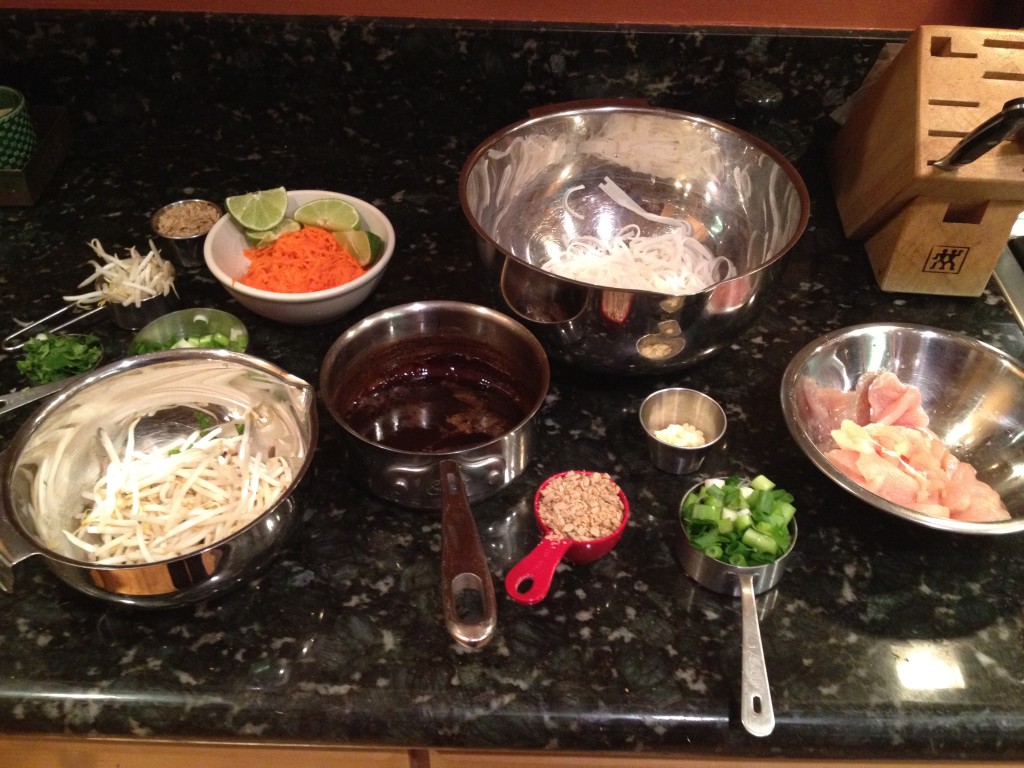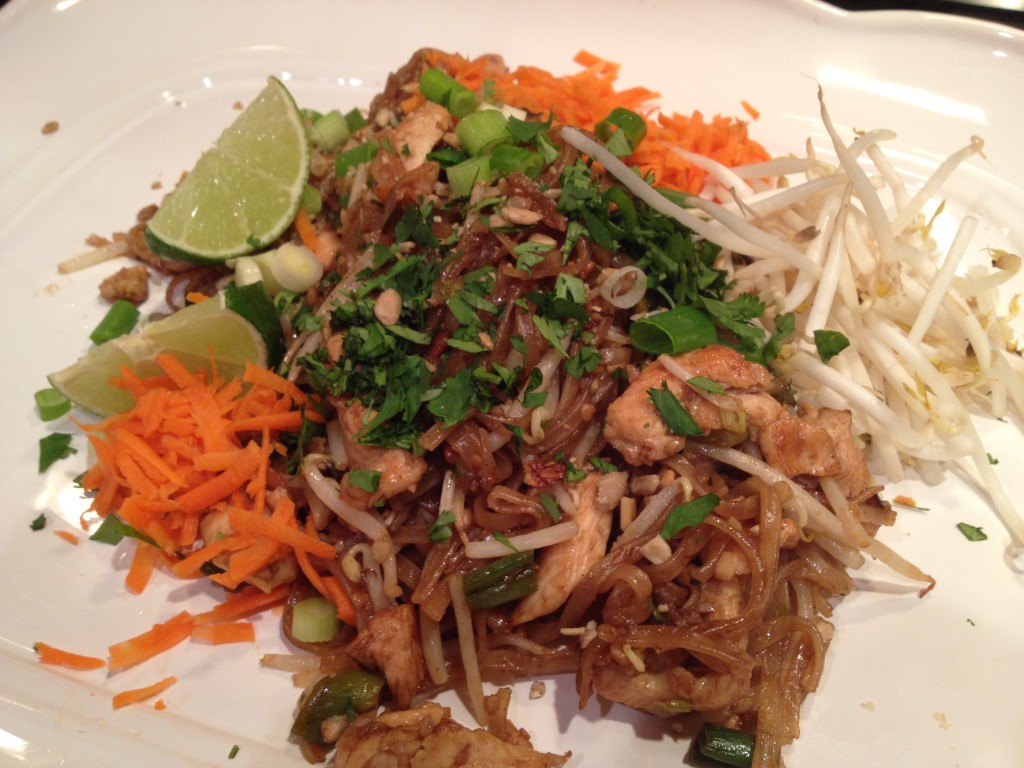Hungarian Goulash with Buttery No Egg Noodles
Hungarian Goulash with Buttery No Egg Noodles
Serves 4
Free of: gluten and all top allergens
Hungarian Goulash is a cool weather favorite, hailing from Eastern Europe. The key ingredient is sweet Hungarian paprika, which has a warm exotic flavor. This dish usually contains gluten, dairy and eggs, but there’s no need for any of that here.
2 pounds boneless beef chuck roast, cut into 2-inch chunks, generously seasoned with salt and pepper
6 tbsp superfine brown rice flour
3 tbsp canola oil, divided
2 cups thinly sliced yellow onion
2 tbsp Hungarian sweet paprika
2 tbsp finely minced garlic
2 cups low-sodium beef broth (look for allergen-free brands)
3 tbsp tomato paste
Big pinch salt
½ cup vegan plain yogurt (preferably “Greek” style So Delicious coconut milk yogurt)
1 tbsp red wine vinegar
1 tsp lemon juice
Salt and pepper, to taste
Buttery No Egg Noodles (recipe follows)
Chopped dill, for garnish
Dredge seasoned beef in flour, shaking off extra.
Heat 2 tbsp oil over medium-high heat in a large Dutch oven. Add half of the beef to the pan, and brown on all sides, about 4 to 6 minutes total. Transfer cooked beef to a plate. Add remaining 1 tbsp oil and repeat the process with remaining half of beef.
Add onion, paprika and garlic to the pan, and cook while stirring for 30 seconds. Add broth, and deglaze, scraping up browned bits from bottom of pan.
Add tomato paste, stir well, and add back beef and big pinch of salt. Bring to a boil, reduce heat to low, and cover. Cook at a low simmer until meat is fork tender, about 2 to 2½ hours, stirring occasionally.
Remove from heat, stir in yogurt, vinegar and lemon juice, and season with salt and pepper to taste.
Serve over Buttery No Egg Noodles and garnish with dill.
Buttery No Egg Noodles
8 ounces gluten-free fusilli or spiral pasta
½ cup frozen peas
2 tbsp dairy-free, soy-free margarine (such as Earth Balance Soy-Free Buttery Spread)
1 tbsp chopped dill
Salt and freshly ground pepper
Cook noodles according to instruction on package. In last minute of cooking, add peas. Drain.
Toss cooked pasta and peas with margarine and dill, and season to taste with salt and pepper.
Hungarian Goulash with Buttery No Egg Noodles © 2013 by Cybele Pascal
This recipe first appeared in the Fall 2013 issue of Allergic Living Magazine
Allergy Friendly Pad Thai
Allergy-Friendly Pad Thai
(Gluten-Free and Top 8 Allergen-Free)
Serves 2
Pad Thai used to be one of my favorite foods, until my allergies to fish, shellfish, and wheat blew up. In fact, in its traditional form, this is one of the world’s most allergenic foods since it contains wheat/gluten, soy, fish, shellfish, eggs, and peanuts.
Not one to be daunted, I decided it was time to conquer this amazing dish, and make it allergy-friendly for us Thai food lovers with food allergies.
This recipe serves two, which is the recommended way to make Pad Thai because cooking a larger batch will make for mushy, clumpy noodles. If you want to double the recipe, you will need to cook the sauce a bit longer than 20 minutes to reduce it, and you will need to cook the Pad Thai in two batches for best results.
Sauce Ingredients
½ cup beef broth [allergy-friendly brand such as KITCHEN BASICS]
½ cup low-sodium chicken broth [allergy-friendly brand such as KITCHEN BASICS]
1 clove garlic, thinly sliced
¼ tsp Chinese five-spice powder [try Spicely Organics, which are allergy-friendly]
¼ tsp salt
½ tsp freshly squeezed lemon juice
1 tsp freshly squeezed lime juice
1 tbsp tamarind paste
3 tbsp palm sugar or brown sugar
½ tsp Sriracha hot sauce (optional)
Main Ingredients
4 oz rice stick (pad Thai noodles)
2 tbsp canola oil
8 oz chicken breast, or pork, or beef, sliced into ¼-inch thick strips, seasoned with a little salt
1 cup chopped green onion, white and green parts divided
3 cloves finely minced garlic (1 tbsp)
1 1/3 cups bean sprouts, divided
½ cup roasted sunflower seeds, chopped, divided
¼ cup chopped cilantro
½ cup carrots, shredded or cut into match sticks
lime wedges
1. Combine beef broth, chicken broth, garlic, and Chinese five-spice powder in a small saucepan over medium heat. Bring to a boil. Now add salt, lemon juice and lime juice, reduce heat to medium-low and simmer uncovered 20 minutes until reduced to ¼ cup. Strain broth through a strainer or fine sieve, using the back of a spoon to push garlic juices through.
2. Return to the pot, add tamarind paste, palm sugar and Sriracha (if using). Stir over low heat, until the sugar is dissolved. Remove from heat and set aside.
3. Put noodles in a large bowl. Pour boiling water over noodles to cover completely. Use tongs to stir noodles a couple times. Let soak 4 minutes. Drain, and rinse with cool water. Set aside.

4. Heat a non-stick or well seasoned wok over high heat, add 1 tablespoon of the canola oil and heat until almost smoking, swirl around wok, then add the chicken. Cook, stirring often, about 3 minutes until golden brown. Transfer to a bowl and set aside.

5. Add the remaining tablespoon of canola oil to the wok. Add ½ cup of the green onions and the garlic to the wok, and cook stirring about 10-15 seconds. Do not burn the garlic.
6. Add remaining ingredients in the following order, and toss after each addition: noodles, 3 tablespoons of the sauce, chicken, 1 cup of the bean sprouts, and ¼ cup of the sunflower seeds. Season with a little salt. Toss everything until heated through but no longer than 1-2 minutes. Using two utensils will make tossing a lot easier!
7. Transfer to a serving platter and serve garnished with the remaining ½ cup of green onions, cilantro, the remaining 1/3 cup of bean sprouts, the carrots, the remaining ¼ cup of sunflower seeds, and a few lime wedges.
Pad Thai Tips
• While making your sauce, prep all your other ingredients except the noodles.
• “Chopping” sunflower seeds: Put the seeds in a ziplock bag and bang a few times with a rolling pin or a mallet. Attempting to chop these seeds with a knife is a losing battle.
• To mix evenly and cook through, use two large spatulas or spoons to toss the Pad Thai as you’re cooking it.
• Read the recipe through before making it, so you are ready to add ingredients to the wok quickly.
Allergy-Friendly Pad Thai © 2013 by Cybele Pascal
This recipe first appeared in the Spring 2013 issue of Allergic Living Magazine

